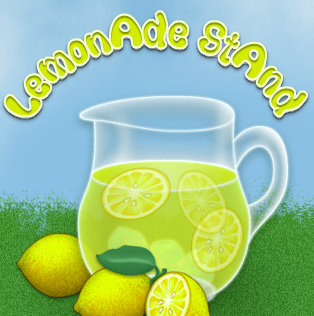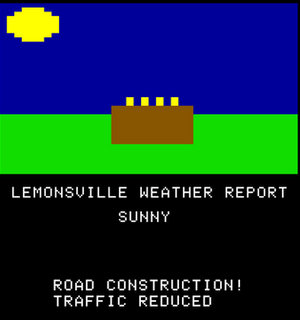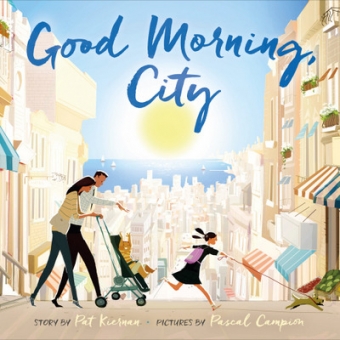Remembering Steve Jobs: My First Apple
Wednesday, 05 October 2011 | by Pat's Picks

Somewhere in the basement of my parents’ condo in Calgary is a box that says “Apple II+.” And in the box there’s a floppy disk containing my best-ever computer programming achievement: a computerized version of “Wheel of Fortune.”
With the news today about the death of Steve Jobs, I was thinking back to my early relationship with Apple Computer. I can’t quite pin down the date but I’m thinking it started in 1979, when my across-the-street neighbor and best pal Doug Greig’s dad bought an Apple computer for his accounting business.
Doug and I proceeded to spend the better part of the next few years perched in front of that computer in his basement. As 11-year-old boys we began with the obvious: the included-with-purchase game, “Little Brick Out.”
Amazing as “Brick Out” was, it didn’t take long before we got bored. There wasn’t a lot of commercial software for the Apple ][ series, or maybe there was, but we had little access to it. So we started messing around with programming. We must have convinced Doug’s father to buy us a few programming utilities, because we owed a lot of our Applesoft program-writing success to the help we got from the Beagle Brothers. The founders of this software pioneer delivered great programs along with quirky catalogs and helpful programming hints, like their “Peeks, Pokes and Pointers” chart, which unlocked many secrets from deep inside the Apple’s 48,000 bytes of memory.
Somewhere along the way, circa 1980, my parents decided they’d see more of me if I didn’t have to go across the street to use the computer, so they made a shockingly large purchase. Our first computer, bundled with monitor, a memory upgrade, game paddles and a few floppy disks was $3000. It was as expensive as a perfectly good used car.
But we sure got our money’s worth. My dad dug out his old gas plant compressor computer program that he’d written for a mainframe. We made an Applesoft BASIC version of that. We learned how to make a database to keep a running total of the statistics for my hockey team. And when we plunked down another $1000 or so for a dot-matrix printer I made the permanent switch to doing my school assignments on a word processor.
Doug and I continued our computer geek collaboration. For two years in Junior High School we entered the citywide computer programming contest. Our parents would drop us off at the host school on a Saturday morning and at 9 am we’d be given a programming assignment. You got points for getting it written first, more points if it actually worked, and then another bonus if the code was efficient and elegant. We were good, but we were never the best. So eventually we retired from competition.
From there, we moved onto software piracy. Somehow it didn’t seem like blatant theft at the time. There was some guy named Bernie who somebody knew through somebody else. And Bernie had hundreds of disks containing every program a young Apple fan could ever want. Like Choplifter.
Eventually, I tired of the games I had copied and turned my attention back to a game that didn’t exist on the Apple. My mom and her parents were huge “Wheel of Fortune” fans and we would often watch together. I knew the game would be fun to play on the computer, but there was no sign that Merv Griffin was working on an “official” Wheel program. So I set out to write one myself. I deconstructed the Wheel of Fortune theme music and created an intro. I had my mom write a series of puzzles and created a database structure. And the game itself came together pretty quickly.
But there was one glitch that took me weeks to overcome. Once you told the Applesoft program brain to seek input from the keyboard, it stopped. And waited. It would not do anything until someone pressed a key. So it was impossible to set a time limit on any aspect of the game because the computer didn’t even realize any time had passed. Until I could crack this problem the game was not worthy of the “Wheel of Fortune” name.
The breakthrough eventually came. (For the fellow Apple geeks it involved applying a” machine language” routine that someone smarter than me had written for another purpose.) The “Wheel” game was complete! I probably should have found a way to demonstrate it for Mr. Griffin, but I was 15, and got distracted by something else.
It wasn’t long after that my first love affair with Apple started to fade. The “IBM Compatible” standard was gaining strength and was better suited to essay writing and spreadsheet analysis. But it was the creation of Steve Jobs and Steve Wozniak that captured my imagination.
Almost three decades later, I bought my first iPhone and re-connected with Apple. One of the first apps I downloaded was a business simulation game called Lemonade Stand.

It was a classic from the early days of Apple. And although my kids prefer the fancy contemporary graphics option on Lemonade Stand, I insist that we play the “retro” version – a faithful representation of the original Apple II screens.

Steve Jobs was a design genius who was famously stubborn with the details. I’m not fully invested in the cult of Apple. I think the company behaves like the evil empire it made fun of in 1984. And someday I will throw my computer out the window before allowing iTunes to do another helpful “software update.” But the comparisons to innovators like Henry Ford and Thomas Edison are justified. His products made us smarter and transformed our lives.
